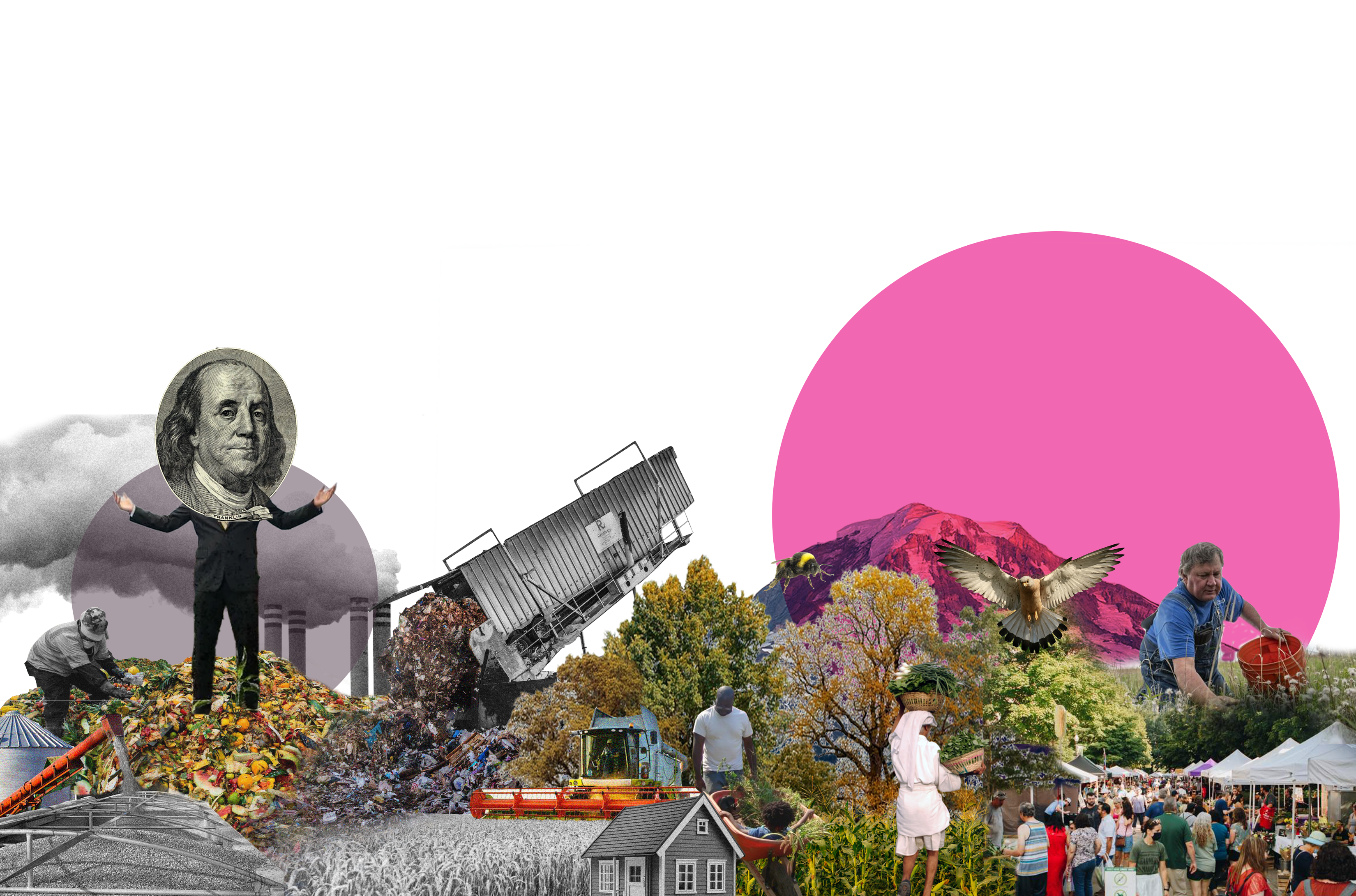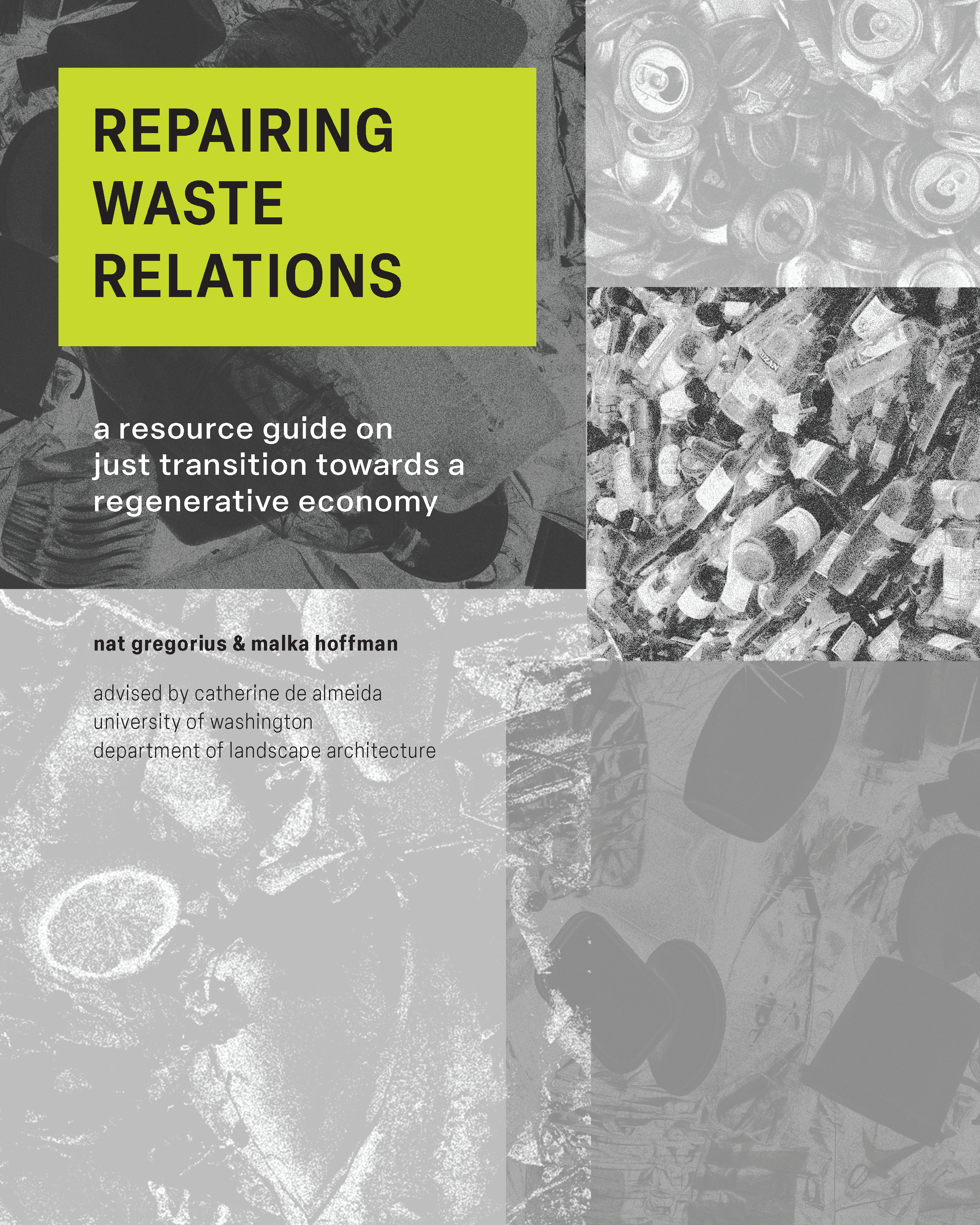studio | Capstone Studio
professor | Catherine De Almeida
year | 2024-2025
Design Manifestos for the End of Capitalism
Students: Chanel Chang, Jill Chao, Jingyao Wu, Joanna Che, Sam Sachs,
Griffin Cronk, Liz Forelle, Nidhi Jain, Matthew Jernigan, Tina Lee, Joe Minsky, Ellee Ruder, Radhika Sarda, Ying Shan

(Food For All, For All Time: A Design Manifesto for Accessible and Local Food Systems. Project By Joanna Chen)
year | 2023-2024
Repairing Waste Relations Resource Guide
Students: Nat Gregorius, Malka Hoffman

how the guide is organized
This resource guide is organized into three sections.
The first section, WHAT ARE WE TRANSITIONING FROM?, provides an overview of the waste material economy and the forms it has taken over time. This is followed by place-based mapping of the waste system as it currently exists in Seattle and the Duwamish Valley as a demonstration of how such systems operate in a place, recognizing that this is not an isolated occurrence.
Section two, WHAT ARE WE TRANSITIONING TOWARDS?, offers practices and processes that will guide us along the arc of a Just Transition towards a community-centered Regenerative Economy. We humbly present foundational work that has roots in frontline, BIPOC, and labor-led movement and organizing spaces. We also explore three case studies of localized material collection and processing spaces that are designed for and operate as community hubs through events, education, spatial amenities, and opportunities for wealth building.
In section three, DESIGN FUTURING, we begin with the voices of community partners as featured through conversations on imagined futures for a just, regenerative Duwamish Valley. Their voices act as a foundation for design speculation on what a decentralized, networked, and community-owned waste material system could look and feel like.
Following these sections, the guide is closed out with READINGS & RESOURCES which includes case studies not explored in this guide, key resources from movement organizers, relevant waste management plans and reports from the city, county, and state, as well as resources for implementing community-driven Regenerative Economy initiatives.
